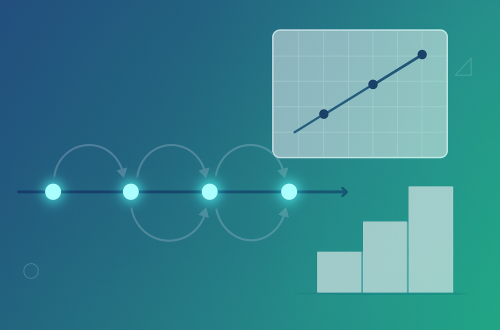The world of mathematics education has undergone a radical transformation over the last two decades. Where once students relied on chalkboards, textbooks, and long hours of solitary problem-solving, today they can access interactive exercises, visualizations, and even AI-driven tutoring systems with just a few clicks. Digital tools have changed not only how mathematics is taught, but also how it is understood, practiced, and experienced.
This essay explores how digital technologies—ranging from simple mobile apps to sophisticated online platforms—are reshaping mathematical learning. It discusses their pedagogical potential, evaluates common challenges, and highlights specific tools that enhance motivation and comprehension. Finally, it considers how technology can foster mathematical intuition rather than replace it, ensuring that human reasoning remains at the center of digital learning.
Reimagining Math Education in the Digital Age
Mathematics has always been a subject that evokes both fascination and anxiety. Its abstract nature and reliance on precision often intimidate students who struggle to connect numbers with the real world. Digital tools, however, have begun to bridge this gap by turning mathematical learning into an interactive, personalized experience.
Unlike traditional methods, digital learning platforms offer immediate feedback and adaptive challenges. Applications such as Khan Academy, IXL, Desmos, or GeoGebra allow students to manipulate variables, visualize functions, and experiment freely. When a student changes a coefficient in a quadratic function, the graph instantly responds—demonstrating relationships that would take much longer to grasp through static textbook diagrams.
Another important shift lies in accessibility. Digital tools are available anytime and anywhere, eliminating geographical and financial barriers. A student in a rural area with limited access to tutors can now explore calculus through free online lectures or AI-powered practice problems. Platforms like Brilliant.org or Coursera provide high-quality lessons from world-class educators, democratizing access to mathematical knowledge that was once confined to elite institutions.
This reimagining of math education reflects a larger trend toward student-centered learning. Technology enables learners to proceed at their own pace, revisit difficult concepts, and explore areas of personal interest. Mathematics becomes less about rote memorization and more about discovery—aligning with constructivist theories of education that emphasize understanding through experience.
The Tools that Make Numbers Come Alive
Digital mathematics education now encompasses a wide range of tools, from gamified mobile apps to advanced visualization software. Each serves a distinct purpose and targets different cognitive levels of learning—from arithmetic fluency to abstract reasoning.
1. Interactive Platforms and Video Tutorials
Perhaps the most widely recognized tool in the digital classroom is Khan Academy. It combines short, concept-focused videos with adaptive practice problems that adjust difficulty based on student performance. The platform’s mastery-based progression encourages learners to strengthen foundational knowledge before advancing. Similarly, YouTube channels such as 3Blue1Brown or Mathologer use animation and storytelling to reveal the beauty of mathematical logic, turning complex theorems into intuitive visual experiences.
2. Dynamic Geometry and Visualization Software
Programs like GeoGebra and Desmos have become indispensable in modern classrooms. GeoGebra merges algebra, geometry, calculus, and statistics into a single interactive workspace. Students can construct geometric figures, adjust parameters, and immediately observe relationships between shapes and equations. Desmos, a free online graphing calculator, offers a simple yet powerful interface for exploring functions, inequalities, and data. These tools cultivate spatial reasoning and help students develop a tangible sense of mathematical structure.
3. Gamified Learning Apps
Gamification has proven particularly effective for engaging younger learners. Apps like Prodigy Math, DragonBox, or Mathletics turn mathematical practice into an adventure. By earning points, badges, and rewards, students are motivated to complete more problems—often spending significantly more time practicing than they would in traditional homework. Importantly, these games embed mathematical logic into narrative and challenge, fostering intrinsic motivation while improving procedural fluency.
4. Collaborative and Assessment Tools
For teachers, digital platforms such as Edmodo, Google Classroom, or Classkick streamline assignment distribution, grading, and feedback. Collaborative problem-solving can occur in real time, allowing students to share strategies and learn from one another. In higher education, Mathematica, Maple, or MATLAB serve as computational laboratories, empowering students to explore real-world data and perform symbolic manipulation beyond the reach of manual calculation.
Table: Overview of Popular Digital Tools for Learning Mathematics
| Tool/Platform | Main Focus | Target Users | Key Features | Educational Benefit |
|---|---|---|---|---|
| Khan Academy | Conceptual understanding & adaptive practice | Middle to college level | Video tutorials, quizzes, progress tracking | Self-paced mastery learning |
| GeoGebra | Visualization and geometry | Secondary & university | Interactive graphs, geometric modeling | Strengthens conceptual intuition |
| Desmos | Algebra and calculus visualization | All levels | Graphing calculator, modeling tools | Enhances real-time exploration |
| Prodigy Math | Gamified arithmetic & problem-solving | Elementary to middle school | Story-based challenges, rewards system | Increases motivation and engagement |
| Brilliant.org | Logical reasoning & advanced math | High school to adult learners | Interactive puzzles, step-by-step reasoning | Promotes deep understanding |
| WolframAlpha | Computational problem solving | High school to professional | Symbolic computation, step explanations | Aids research & verification |
| Google Classroom | Learning management & collaboration | Teachers and students | Assignments, feedback, peer review | Simplifies communication and assessment |
Challenges and Ethical Considerations in Digital Mathematics Learning
While digital tools bring enormous promise, they also introduce challenges that educators and learners must navigate carefully. One concern is over-reliance on automation. Tools like WolframAlpha or Photomath can instantly solve complex equations, showing every intermediate step. While useful for verification, these features risk replacing genuine reasoning with passive consumption. Students may memorize procedures without developing a deep conceptual understanding of why those procedures work.
Another issue is the digital divide. Access to devices and stable internet remains unequal across regions and socioeconomic backgrounds. Students in low-income or rural areas may not benefit equally from technological advances, reinforcing existing educational inequalities. Addressing this requires investment in infrastructure, free open-access resources, and teacher training to integrate technology inclusively.
Additionally, the quality of content on online platforms varies widely. While some apps are pedagogically sound, others emphasize entertainment over learning or provide incorrect solutions. Teachers must therefore curate and evaluate tools carefully, ensuring that technology complements, rather than replaces, human guidance.
Privacy and data ethics also deserve attention. Many educational platforms collect large amounts of user data to personalize learning. Without proper regulation, this data could be misused for commercial or surveillance purposes. Ethical digital education requires transparency, consent, and strict privacy protection for minors.
Digital Tools as Cognitive Partners, Not Replacements
Despite these challenges, the role of digital tools in mathematics education is overwhelmingly positive when used thoughtfully. The key lies in understanding technology as a cognitive partner—an extension of human thought, not a substitute for it.
When students use dynamic graphs to explore the relationship between slope and intercept, they engage in active inquiry rather than rote computation. Similarly, when teachers use online simulations to demonstrate statistical randomness or probability distributions, they help students visualize abstract concepts that are otherwise invisible.
Digital tools also nurture collaboration and creativity. Platforms that allow students to share problem-solving strategies encourage a culture of discussion and peer learning. In some advanced courses, students even design their own mathematical models or apps, blending programming with mathematical reasoning—a skill increasingly valuable in data-driven careers.
Importantly, technology supports differentiated instruction. Adaptive learning algorithms can identify weak areas and adjust exercises accordingly. For example, a student struggling with fractions might receive extra visual tasks, while another ready for a challenge could move on to algebraic manipulation. This personalization empowers learners and fosters confidence, countering the widespread perception that mathematical ability is innate.
The Future of Mathematics Learning: Integration, AI, and Beyond
The next frontier of digital mathematics education lies in artificial intelligence, augmented reality, and virtual collaboration. AI-powered tutors like ChatGPT, MathGPT, or DeepMath can already generate step-by-step explanations, adapt to individual learning styles, and simulate Socratic dialogue. These systems are beginning to resemble real tutors—capable of answering questions, diagnosing misconceptions, and offering tailored practice.
Augmented and virtual reality (AR/VR) hold equal promise. Imagine visualizing multivariable calculus or topology in immersive 3D environments, where surfaces, curves, and transformations can be experienced spatially rather than abstractly. Such visualization not only improves comprehension but also inspires creativity by connecting mathematics to art, architecture, and engineering.
Meanwhile, the global nature of online education continues to foster cross-cultural collaboration. Students from different countries can now solve problems together in real time, comparing methods shaped by diverse educational traditions. Mathematics, a universal language, becomes an avenue for intercultural dialogue.
However, the success of these innovations depends on digital literacy—the ability of both students and teachers to use tools critically and creatively. Educational systems must train instructors not just to adopt technology but to integrate it meaningfully into curricula, balancing automation with human insight.
Conclusion: Toward a More Engaged and Equitable Mathematics Education
Digital tools have transformed mathematics from a solitary pursuit into an interactive, collaborative, and deeply engaging experience. Through adaptive learning, visualization, and gamification, they have made abstract concepts tangible and accessible to millions of learners worldwide. Platforms such as GeoGebra, Khan Academy, and Brilliant.org demonstrate that mathematical thinking can be nurtured through exploration and play, not fear and memorization.
Yet technology is not a panacea. Its effectiveness depends on thoughtful use, pedagogical integrity, and equitable access. Teachers remain the architects of learning, and students the builders of their own understanding. Digital tools should serve as bridges—connecting intuition with logic, theory with application, and learners with the global community of mathematical thinkers.
In the end, the true goal of digital mathematics education is not to replace human reasoning but to amplify it. When technology is harnessed to encourage curiosity, creativity, and critical thinking, mathematics becomes more than a subject—it becomes a living, evolving language for exploring the patterns of our world.

